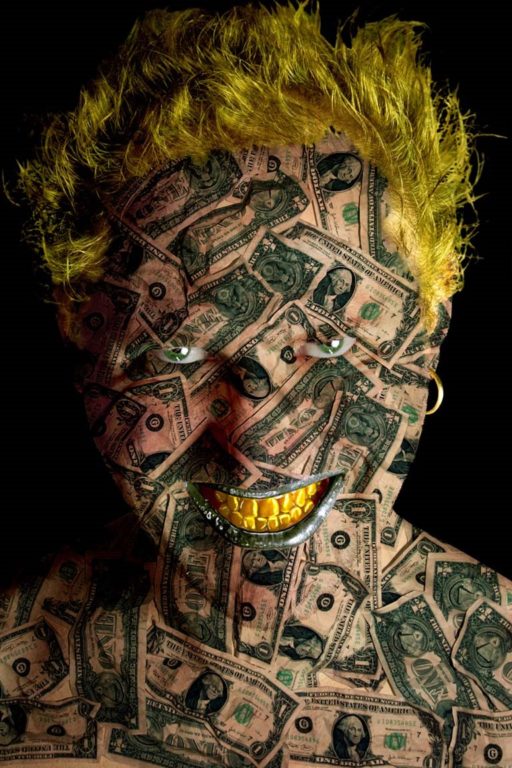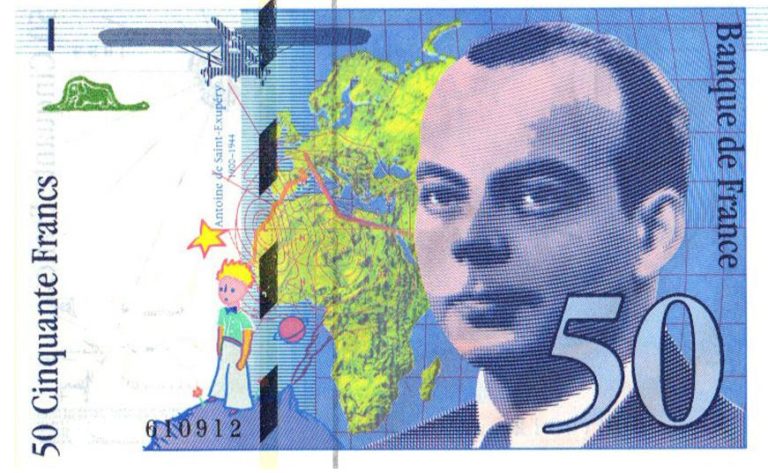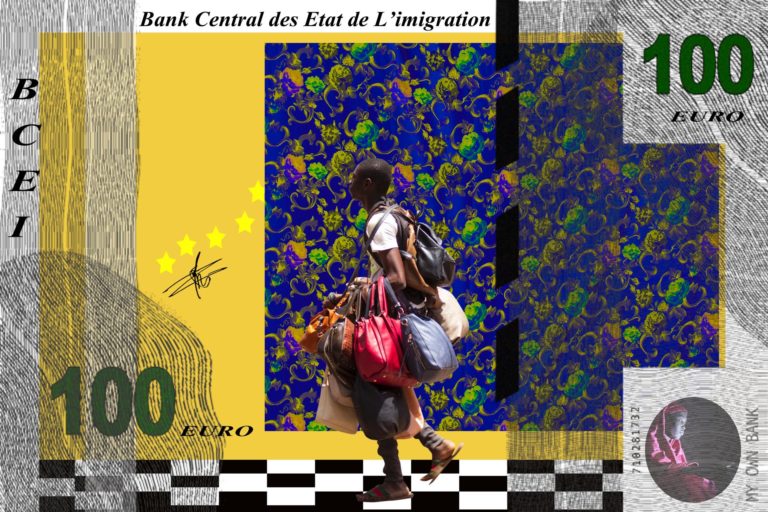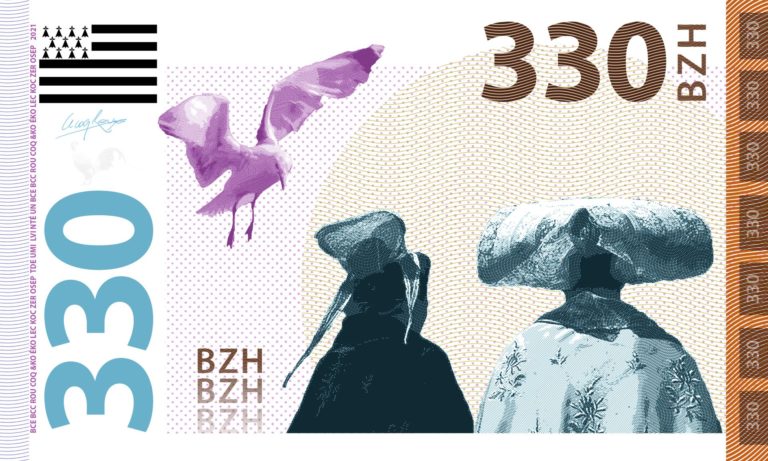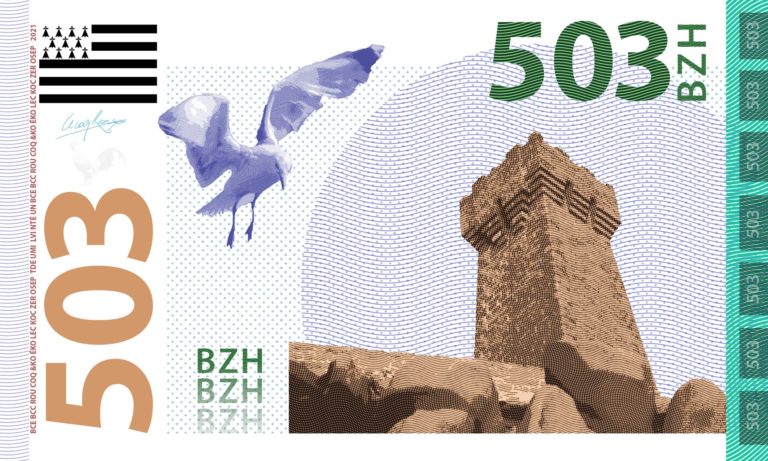Meeting Philippe Assalit: Plastician Photographer
Philippe Assalit, jury member of the IMAGINE CURRENCY competition, is a self-taught photographer and visual artist, and a scientist by training. His work is primarily concerned with the human body, femininity, and masculinity, at the borderlines between painting, sculpture, drawing, and photography. He describes himself as a neo-Pictorialist, inspired by the pioneers of collage, grattage, montage, and hand colouring.
He combines the techniques of make-up, drawing, painting, montage, and three-dimensionality, working in series (of between 10 and 100 photographs) to be viewed chronologically or as a single kaleidoscopic pieceIn plural, it is commonly used as synonym for units of banknotes and coins. More.
In the series “Monnaies,” an allegory of civilisations and their cultures, each face is chiseled by the cut-out details of the country’s banknotes to which the model belongs, modeling the portrait of a country and inviting real and imaginary journeys. Wipplay took advantage of the IMAGINE CURRENCYThe money used in a particular country at a particular time, like dollar, yen, euro, etc., consisting of banknotes and coins, that does not require endorsement as a medium of exchange. More contest to ask him some questions. The goal? To share some inspirations for the next contestants!
Tell us about your “Monnaies” series. Why have you decided to associate the faces of the women and men from 50 countries around the world to current or historical banknotes?
It is both a journey across the globe and a discovery of each country’s culture, history, and the message it decided to carry out through banknotes. It is also a look at the major financial zones and especially the eurozone, with regards to the ancient and multiple national representations that are no longer used. Besides, it is an interest for the drawing and engravingMarking with incision or etching an intaglio printing plate to create a design which will be transferred on the paper or another substrate during the printing. More, and the idea that human beings exchangeThe Eurosystem comprises the European Central Bank and the national central banks of those countries that have adopted the euro. More little pieces of illustrated papers: banknotes.
Can you tell which banknotes and banknotes designers have inspired you? Which one has impacted you the most and why?
It is the 50 francs banknoteA banknote (or ‘bill’ as it is often referred to in the US) is a type of negotiable promissory note, issued by a bank or other licensed authority, payable to the bearer on demand. More with Saint Exupéry’s Little Prince on it, created by Roger Pfund – maybe because it was created by an artist. I regret so much that his series for the EuroThe name of the European single currency adopted by the European Council at the meeting held in Madrid on 15-16 December 1995. See ECU. More wasn’t chosen, it was a wonder.
In your opinion, what is the secret recipe for a good artistic banknote?
Invention, creative freedom, and search for meaning, in terms of message obviously but also in terms of aesthetics since it is an object that will travel. A banknote is a country’s ambassador, reflecting its particularities. The most beautiful banknotes gather all of the above.
If you could create your own currency, what would it be?
In Europe, we use the euro. I am working on banknotes with a common recto for the entire zone, but a different back for each country, like what is done for coins. We will have in our pockets 10 euros bills identified as Greek, Spanish, French, Belgium, German… and so on in the 19 member countries. It is a fresh breeze for the unity of cultures that are all so different. I want to submit this idea to Christine Lagarde.
©WipplaySee more of Philippe Assalit’s creations on his website.
IMAGINE CURRENCY PHOTO CONTEST: JOIN NOW!
You still have a chance to share your imagination and win exciting prizes! The contest is open to everyone across the globe. It will run until 29 September 2021 at 23h59, (UTC+2), CEST: Central European Summer Time.

